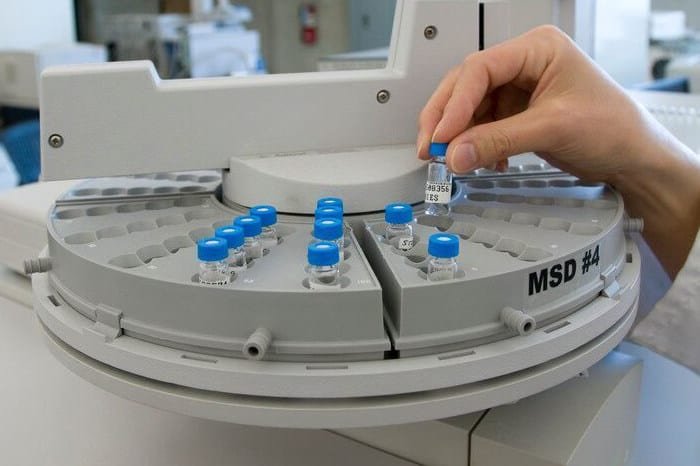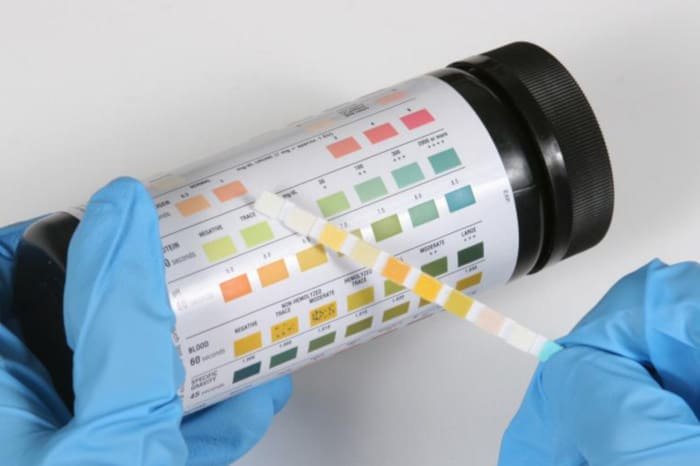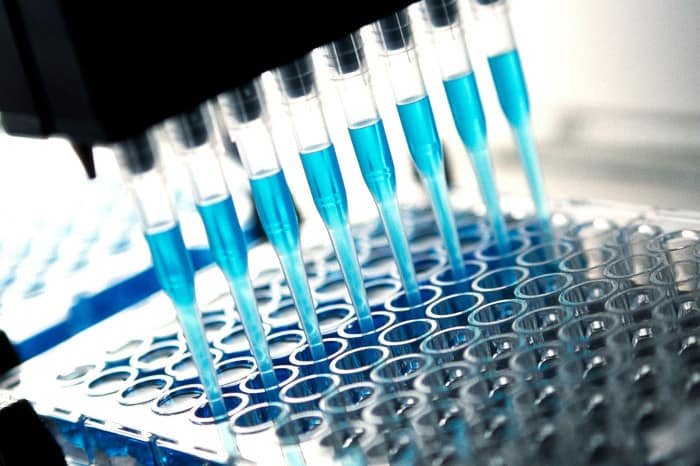Off-label use of modafinil is on the rise. Considering how well it can work to increase your focus and productivity, and reduce mental fatigue, it’s little wonder that’s the case.
But it’s not just students and working professionals who take advantage of modafinil.
In addition to making you more productive, modafinil also has a few lesser-known effects. Namely, it can improve your situational awareness and reaction times. These two benefits also make it a highly desirable substance for athletes and esports players.
To ensure fair play, every sports authority, and many universities and companies use drug tests to identify anyone using performance-enhancing drugs. Though not illegal, in many cases, modafinil does fall into that category.
For many the questions is, then, will modafinil show up on a drug test and, if so, how serious of a problem is it.
TABLE OF CONTENTS
How Modafinil Improves Performance
Officially, modafinil is a treatment for various sleep conditions, including narcolepsy and shift work disorder (1). In some cases, it may also be prescribed by doctors to manage ADHD (2) and depression (3)(4).
Off-label, modafinil is a powerful cognitive enhancer (5)(6)(7) used by a broad cross-section of the population.
Modafinil promotes wakefulness (8), in a way much stronger than any cup of coffee ever could. But this drug doesn’t stop there.
It can also increase your focus (8), reduce mental fatigue (9), give a boost to your situational awareness (10), and even increase your reaction times (11). Depending on what you’re doing, some or all of these effects can be very beneficial.
If you’re a student or working professional, you have a lot to gain from improved concentration and mental clarity. Your productivity can vastly improve, as can the quality of your work, giving you a leg up on the competition.
If there’s a deadline fast approaching or you have an exam to cram for, modafinil’s ability to keep you awake and your mind fully engaged is also of enormous benefit. The same applies to jet-lagged business travelers.
Improved awareness, greater focus, and faster reaction times also make modafinil popular in both amateur and professional athletics, as well as esports. An increase to any one of those three factors can translate to a significant advantage on the field of play (virtual or otherwise).
Given these benefits, few can question whether modafinil is indeed a performance-enhancing drug.
How Are Drug Tests Done
There are multiple ways of performing a drug test. They all involve analysis of either urine or blood samples but vary in levels of scope and effectiveness.
Some methods are opt-in, where a substance must specifically be looked for to be identified. Others will always show any foreign content in the test sample.
The exact method used will depend on which compounds need to be identified, how accurately, and at what expense.
Gas Chromatography Drug Testing
Gas chromatography was the method used in the first official drug tests. It dates back to 1966 and was invented by a German chemist Manfred Donike (who, incidentally, was a cyclist and twice competed in the Tour de France).
The procedure works by first vaporizing your blood or urine sample, then sending it through a long tube for analysis.
Based on their molecular weight, various compounds contained within the vaporized sample separate and exit at the other end of the tube individually. As they do so, a UV light is used on them to produce a series of uniquely identifying data points.
Once the process completes, the obtained data points are compared to the baseline results of any number of banned substances. If there is meaningful overlap, the presence of that banned substance is confirmed.
Today, gas chromatography is typically performed together with another method called mass spectrometry.

Mass Spectrometry Drug Testing
You can almost think of mass spectrometry as gas chromatography taken to the next level.
In this type of drug test, electron lasers first ionize all the components of your urine or blood samples, which are then sorted based on their mass.
Every compound that undergoes this process has a unique fingerprint, which helps determine its present in (or absence from) the original specimen.
One of the most significant advantages of mass spectrometry is that it’s an exploratory method. It reveals the composition of a sample in detail without having to look for a specific substance.

Reagent Drug Testing
Central to the reagent drug test are compounds which change color when mixed with other chemicals. This method involves mixing such a compound with either a blood or urine sample to test for a specific substance. If the color changes, the presence of that substance is confirmed.
The tests lifeguards carry out at the pool to check chlorine levels? Those are reagent tests.
Reagent compounds come either on a test strip or as drops.
A reagent drug test is easy to perform and can be done on the spot. It’s also one of the most cost-effective methods.
Thanks to its accessibility and ease of use, this method is typically used by hospitals to test for overdoses of a specific drug. Corporate drug screens also often use this method.
The downside of a reagent test, from the analyzer point of view, is that it only reveals the specific substances which are sought. They don’t provide a complete chemical breakdown of your urine or blood sample.
In other words, if some drug is not being looked for, it will not be found.

Immunoassay Drug Testing
Another popular drug testing method, immunoassay drug screening identifies a banned substance in a roundabout way. Instead of looking for the substance itself, it looks for specific antigens your body produces in response to it.
Your immune system to some degree analyzes anything that enters your body. If it deems something a threat, it will produce antibodies in response.
Although mild, many drugs invoke precisely such a response and cause your immune system to go on the offensive. The presence of an antibody produced as a result of a banned substance is a strong indicator that banned substance is or was in your system.
The most significant advantage of the immunoassay drug test is that it can detect the presence of an illicit drug long after it disappears from your body. Antibodies hang around much longer than what they were fighting.
This means that even if a gas chromatography, reagent, or mass spectrometry test comes up negative, and immunoassay screen can still confirm past use of a drug.
The disadvantage of immunoassay tests is that they often come up with false positives. They are, therefore, never treated as conclusive, only as an indicator that further, more in-depth testing is required.
And, similar to the reagent drug test, immunoassay screenings only identify compounds that are specifically targeted. They do not give a full breakdown of your urine or blood.

Which Drug Test Methods Find Modafinil
All four drug screen methods (gas chromatography, mass spectrometry, reagent tests, and immunoassay screenings) can reveal the presence of modafinil, or, at the very least, trigger enough red flags to warrant further investigation.
Of the four, reagent and immunoassay tests will only do so if modafinil is specifically looked for.
Who Does Modafinil Drug Tests
In one form or another, drug testing has been around for more than a century. Early attempts consisted of either crude methods of urine analysis or, even less accurate, behavioral analysis.
Industrialist Henry Ford, for example, made use of the latter. He insisted his workers maintain both high moral standards and abstain from drinking too much. He had employees whose job was to follow others around exclusively, spy on them, and report any unacceptable behavior.
These methods wouldn’t fly today. Not only are they socially frowned upon, but also quite impractical. And, with the advent of the accurate urine or blood testing methods already described above, they’re even not at all necessary.
There are three broad categories of organizations that perform drug screens.
Athletic Organizations
Drug testing in any sport is now standard practice. Every athletic authority worth its salt uses them to make sure no competitor benefits from an unfair advantage.
Since cheating is so prevalent in sports, athletic organizations use more accurate and expensive methods of screening for banned substances, including immunoassay screens, gas chromatography, and mass spectrometry.
The type of compound testers look for is very much dependent on the sport and the agency doing the screen. If something can be considered an advantage, odds are it will be tested for.
Every country around the world has its own anti-doping organization responsible for drug testing their athletes, and the standards followed may vary a lot between them.
Corporations
Since the United States passed the “Drug-Free Workplace Act of 1988” under president Regan, drug testing has become much more common in corporate America.
Drug use was seen as an ever-increasing problem, one which negatively impacted worker productivity (and, indeed, health). These days, many companies consider drug screens as standard practice.
Government Organizations
Different levels of government run or funded organization also mandate drug tests, for both employees, and the general public at large.
For government employees, testing is common in positions of authority. The military and transportation services (like municipal transit systems) also often have people undergo drug screens.
As far as the general public, it’s not uncommon to be subjected, sometimes forcefully, to a drug test when the situation calls for it. People involved in car accidents will often be tested for the presence of illicit substances in their system.
For a variety of reasons, hospitals too routinely test for drugs.
What Substances Do Drug Tests Look For
There is no standardization of drug tests. Every organization and company that chooses to perform one decide what drugs to look for based on what is relevant to them.
Drug tests are broken down into something called panels. A panel is nothing more than a group of substances. 4-panel, 7-panel, 10-panel, and 12-panel tests are typical.
A 4 panel test for one company could, for example, screen for cocaine, opiates, phencyclidine (PCP), and tetrahydrocannabinol (THC). Another company could use a 4-panel test made up of entirely different compounds.
Substances tested for in drug screenings will most commonly include at least four of the following:
- Amphetamines
- Anabolic steroids
- Barbiturates
- Benzodiazepines
- Cocaine
- Ecstasy/MDA
- Marijuana
- Methadone
- Methamphetamines
- Opiates
- Opioids
- Oxycodone/Percoset
- Phencyclidine (PCP)
- Propoxyphene
- Quaaludes
- Tetrahydrocannabinol (THC)
Does Anyone Test For Modafinil
With a few notable exceptions, modafinil is not a substance typically tested for in drug screens.
Both private and public companies tend to perform smaller-scale tests, typically 4 or 5-panel. In rare cases, they’ll go as high as 12. However, it is very unlikely modafinil will be on the list.
Plain and simply, workforce modafinil use is not a problem. Arguably, thanks to its ability to boost on-the-job performance and productivity, it’s considered a positive though no one will, of course, come out and say that.
And because companies tend to use reagent drug tests (due to accessibility and low cost), it’s not possible for modafinil to discovered by accident. If you recall, reagent tests look for a specific set of substances and nothing else.
Sports organizations and athletic commissions, however, may look for modafinil, especially at higher levels of competition.
Such organizations typically use expensive and detailed drug testing methods like gas chromatography, mass spectrometry, and immunoassay screens. Those methods will reveal the presence of modafinil and any other compound, even if they’re not specifically searched for.
Modafinil Tests in Athletics
Every sports organization provides a list of what it considers illegal substances. In the US, for example, the NCAA offers a general guideline to banned drugs right on its website.
Modafinil isn’t explicitly on this list. However, stimulants are. Though modafinil isn’t technically a stimulant (it’s classified as a eugeroic compound), it shares many similar effects and will likely be treated the same.
Other organizations, like the World Anti-Doping Agency, do explicitly list modafinil as a banned substance. The U.S. Anti-Doping Agency uses the same prohibited list.
For athletic commissions around the world, drug screening has always been very subjective. If something that’s not supposed to be present in your system is found (and odds are it will be), it’s up to the organization to consider all the facts and decide on what actions it should take.
For substances which are not explicitly on the banned list (like modafinil for the NCAA), those decisions are usually made on a case by case basis.
If you do, for example, suffer from narcolepsy and have a doctor’s prescription, your case will be looked at very differently than someone’s who uses modafinil as a study aid.
The bottom line is, though, avoid modafinil use if you compete in regulated sports. This statement is especially true if you intend on using the drug off-label.
Modafinil Tests in Esports and Professional Gaming
Esports, or professional video gaming, is now big business. It has an estimated (and every increasing) audience of half a billion people worldwide.
With big popularity comes massive competition and pressure to perform.
Much like in the world of athletics, players look for any advantage they can get. With esports, focus, fast reaction times, and reduced mental fatigue matter a lot. These are all benefits which modafinil brings to the table.
In 2016, the Electronic Sports League (ESL) had published a list of prohibited substances. Not surprisingly, among several other cognitive enhancing drugs, both modafinil and armodafinil are on the list.
Therefore, if you are or intend on competing in any form of esport, avoid modafinil and armodafinil use at all cost. Both will be tested for.
Modafinil Tests by Corporations and Governments
Public and private corporations, as well as governments, are very unlikely to test for modafinil. It’s a substance which is not considered a problem and therefore, not commonly looked for.
These types of organizations will typically use less expensive forms of drug screening like reagent tests. With those methods, when a substance is not searched for specifically, it will not be found.
Tests like gas chromatography or mass spectrometry which would reveal the presence of modafinil without it being explicitly targeted won’t be used without cause (if ever at all). They’re far too expensive.
So, while this may change in the future, the odds of modafinil causing you to fail a drug test at work are very remote.
Conclusion
Whether modafinil shows up on a drug screen or not ultimately depends on whether it’s being searched for.
Work drug tests typically use cheaper screening methods like reagent and immunoassay tests. These are opt-in tests, meaning a substance needs to be explicitly sought to be found. Since modafinil is not currently considered a problem by the corporate world, it should not be included in the test and cause you to fail it.
Professional sports organizations, however, including esports, use more costly and higher-tech screening methods that find chemicals even if they’re not specifically searched for. Modafinil will show up on this type of drug test. Whether that is or isn’t a problem will then depend on the specific organization’s drug use policies.
References
- Vivien C Abad, Christian Guilleminault. New developments in the management of narcolepsy. Nat Sci Sleep. 2017; 9: 39–57.
- Wang SM, et al. Modafinil for the treatment of attention-deficit/hyperactivity disorder: A meta-analysis. J Psychiatr Res. 2017 Jan; 84: 292-300.
- Goss AJ, et al. Modafinil augmentation therapy in unipolar and bipolar depression: a systematic review and meta-analysis of randomized controlled trials. J Clin Psychiatry. 2013 Nov; 74(11): 1101-7.
- Price CS, Taylor FB. A retrospective chart review of the effects of modafinil on depression as monotherapy and as adjunctive therapy. Depress Anxiety. 2005; 21(4): 149-53.
- Turner DC, et al. Cognitive enhancing effects of modafinil in healthy volunteers. Psychopharmacology (Berl). 2003 Jan; 165(3): 260-9.
- Battleday RM, Brem AK. Modafinil for cognitive neuroenhancement in healthy non-sleep-deprived subjects: A systematic review. Eur Neuropsychopharmacol. 2015 Nov; 25(11): 1865-81.
- Maddalena Mereu, et al. The neurobiology of modafinil as an enhancer of cognitive performance and a potential treatment for substance use disorders. Psychopharmacology (Berl). 2013 Oct; 229(3): 415–434. 2014 Oct 1.
- Paul Gerrard, Robert Malcolm. Mechanisms of modafinil: A review of current research. Neuropsychiatr Dis Treat. 2007 Jun; 3(3): 349–364.
- Florien W Boele, et al. The effect of modafinil on fatigue, cognitive functioning, and mood in primary brain tumor patients: a multicenter randomized controlled trial. Neuro Oncol. 2013 Oct; 15(10): 1420–1428.
- Estrada A, et al. Modafinil as a replacement for dextroamphetamine for sustaining alertness in military helicopter pilots. Aviat Space Environ Med. 2012 Jun; 83(6): 556-64.
- Morgan RE, et al.Modafinil improves attention, inhibitory control, and reaction time in healthy, middle-aged rats. Pharmacol Biochem Behav. 2007 Mar; 86(3): 531-41.

Leave a Reply